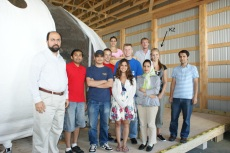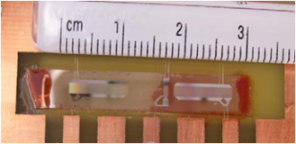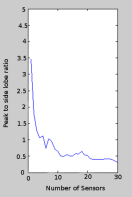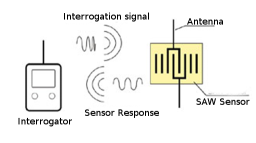Personal Page
University of Maine - Passive Wireless SAW Sensor Network
In the summer of 2011 I was invited to the University of Maine's Electrical and Computer Engineering department to participate in the NSF program Research Experience for Undergrads (REU). Then and now, this group of researchers work on cutting edge sensing devices and systems. I worked on a project that investigated the upper limit on the number of passive wireless Surface Acoustic Wave sensors that could be in one area on the same transmitting frequency.
Abstract- This research investigates the interference in networks of passive wireless sensors. The motivation behind studying passive wireless sensors is that they are very useful in harsh environments that may be at high temperatures or have moving parts; this is because the sensors do not need a battery or bulky wiring. With surface acoustic wave (SAW) based sensors, it is possible to detect a desired measurand from multiple locations using multiple sensors. This is made possible in part by previous work in devices [1], coding [2], and on signal detection in [3]. However, by the sensor identification process, when the signal is retrieved from the target sensor it is possible for interference to aggregate. The target sensor's signal is embedded within this total signal which, if there is too much interference, degrades the performance of the system. It is important to discover the upper limit of sensors that contribute to this degradation and to find ways of negotiating it. This project models the cumulative effects of inference coming from the network.



